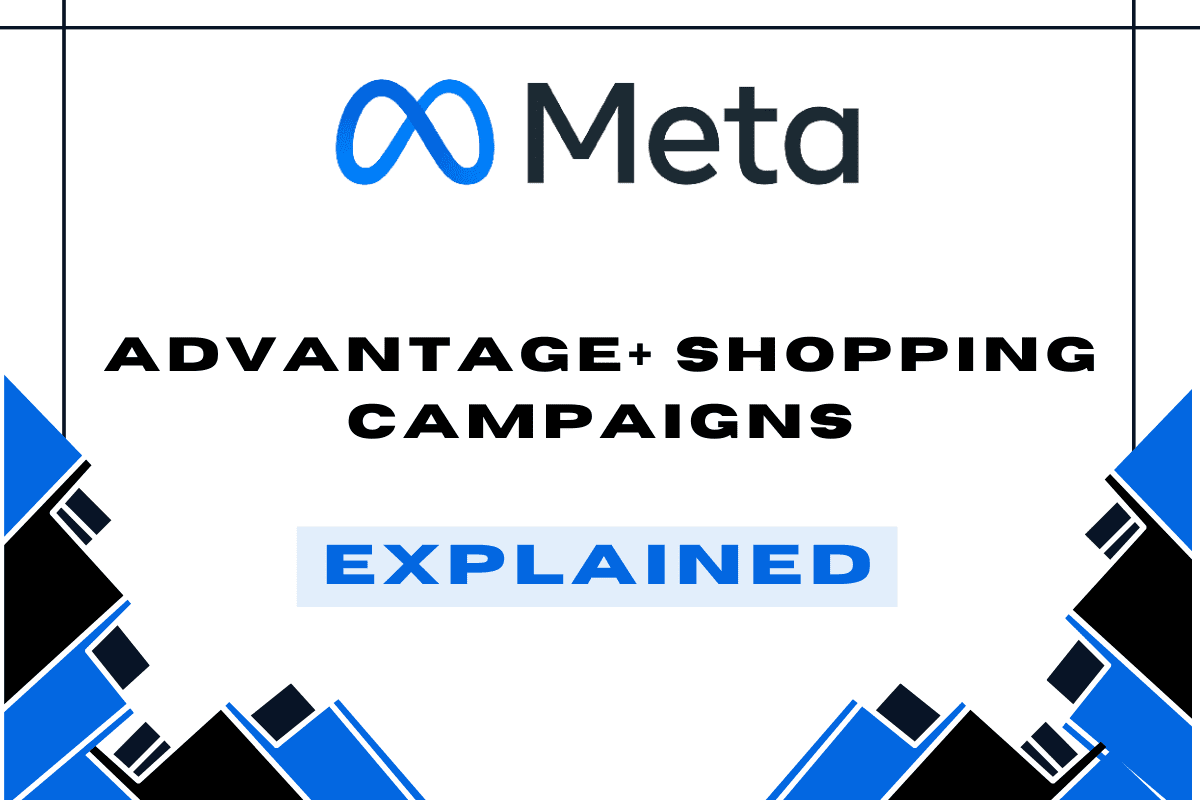Meta Advantage+ Shopping Campaigns (ASC) have become an increasingly popular advertising solution for businesses looking to drive sales and revenue through e-commerce. ASC offers a streamlined, intuitive means of creating and managing e-commerce ads on Facebook, with a range of features and benefits that make it an attractive option for businesses of all sizes.
In this post, we’ll explore the basics of ASC and how it differs from Dynamic Product Ads (DPAs). We’ll also dive into some of the advanced features of ASC, such as Dynamic Creative Optimization (DCO) and Multi-Format Ads, and provide some best practices for optimizing your ASC campaigns. Finally, we’ll look at how iOS14 prompted the creation of this new solution.
The Basics of Meta Advantage+ Shopping Campaigns
Advantage+ Shopping Campaigns (ASC) are a new advertising solution that helps businesses promote their products across multiple platforms with a single campaign. This new feature uses machine learning to optimize ads for the best performance. For example, it allows Facebook’s algorithm to adjust bids and budgets to maximize impact and help businesses reach their advertising goals. Advantage+ Shopping Campaigns also provide detailed reporting and analytics to track campaign performance and make necessary adjustments.
Because Meta changes terminology so frequently, there is often confusion between Dynamic Product Ads (DPA) or Advantage+ Catalog Ads and Advantage+ Shopping Ads. One of the key differences between ASC and Dynamic Product Ads (DPAs) is that ASC is based on a product catalog rather than on user data. This means that businesses can create personalized product ads based on the products they offer rather than individual user data. Using Facebook’s machine learning algorithms, businesses can optimize their ads to reach people who are most likely to make a purchase without relying on individual user data.
To set up an ASC campaign, businesses can follow a simple, intuitive process that involves creating a product catalog, selecting a campaign objective, and setting up ad creatives. Facebook offers a range of ad formats, including single image, carousel, and video ads, to help businesses create compelling ad creatives tailored to their specific audience.
Advanced Features of ASC
ASC also offers a range of advanced features that can help businesses optimize their e-commerce advertising efforts and drive more sales. One of the most powerful features of ASC is Dynamic Creative Optimization (DCO), which allows businesses to test and optimize their ad creatives to improve performance automatically. DCO uses Facebook’s machine learning algorithms to identify the best ad creative for each user based on their interests and behaviors.
Another key feature of ASC is Automated Bidding, which allows businesses to automatically bid on ad impressions based on their budget and goals. This can help businesses achieve better results with their advertising budget by ensuring that they bid on the right ad impressions at the right time.
Finally, Multi-Format Ads allow businesses to create ad campaigns that include a range of ad formats, such as single image, carousel, and video ads. This can help businesses reach a wider audience and drive more sales by tailoring their ad creatives to their target audience’s specific interests and behaviors.
Best Practices for Meta Advantage+ Shopping Campaigns
To achieve the best results with ASC, businesses should follow some best practices for optimizing their campaigns. One important consideration is optimizing their product catalog, ensuring their products are accurately categorized and tagged. This can help businesses show their products to the right audience and improve ad relevance.
Another key best practice is targeting the right audience. By using Facebook’s targeting options, businesses can reach people most likely to be interested in their products based on their demographics, interests, and behaviors.
Finally, businesses should focus on creating compelling ad creatives tailored to their specific audience. This can involve engaging visuals, persuasive copy, and a clear call-to-action to encourage people to purchase or take another desired action.
The ASC Origin Story
It’s possible that the iOS14 update played a role in the development of Advantage+ Shopping Campaigns (ASC) by Facebook. The iOS14 update introduced several changes that impacted how Facebook and other platforms track user data and serve personalized ads.
One of the most significant changes introduced by iOS14 was the requirement for apps to ask for explicit user consent before tracking their data for advertising purposes. This change made it more difficult for Facebook and other platforms to collect data about users and serve personalized ads.
ASC offers a solution to this challenge by allowing businesses to create personalized product ads based on their product catalog rather than relying on data collected from individual users. By leveraging the power of Facebook’s machine learning algorithms, businesses can automatically optimize ad delivery to reach people who are most likely to make a purchase without relying on individual user data.
Overall, while Facebook has not explicitly stated that the iOS14 update was the reason for developing ASC, it’s likely that the update played a role in developing this new advertising solution.
Conclusion
Meta Advantage+ Shopping Campaigns (ASC) offer businesses a powerful advertising solution to drive e-commerce sales and revenue. With various campaign objectives, advanced features, and best practices for optimizing performance, ASC is a great choice for businesses looking to improve their online advertising efforts.
By following best practices for optimizing their product catalog, targeting the right audience, and creating effective ad creatives, businesses can achieve great results with ASC. And by using ASC to promote their products to a wider audience, businesses can drive more sales and revenue while building a stronger online presence and brand awareness.


